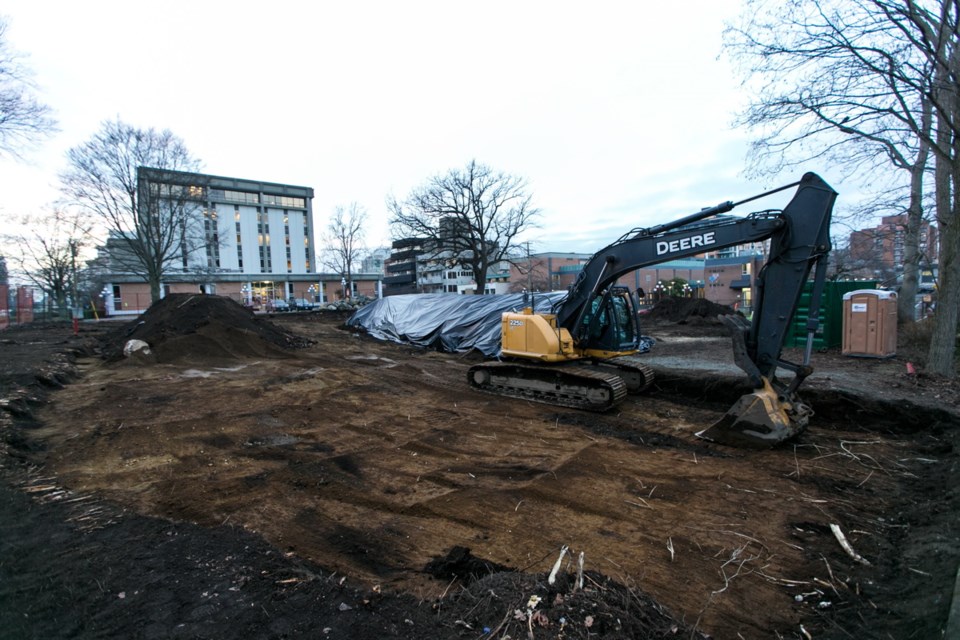The park and playground being built at the former tent city site on the Victoria courthouse lawn will feature new soil, trees and a design meant to prevent crime.
Remediation began this month to remove nearly half a metre of contaminated soil and nine trees that were deemed a safety concern.
More than 100 people lived in tents and lean-tos at the camp until August, after a B.C. Supreme Court judge ruled it could be shut down if adequate housing was offered to its residents. The province invested $26 million in temporary and long-term housing for homeless campers.
An environmental report released in December said there were contaminants such as lead, gasoline, diesel and trace amounts of methamphetamines in a corner of the camp where a suspected drug lab was set up.
Amrik Virk, British Columbia’s minister responsible for site, said the cleanup is expected to cost $350,000 and will involve removing more than 75 dump-truck loads of contaminated soil.
After new topsoil is put in place, nine new trees will be planted alongside the 11 healthy trees that remain. The park is set to open this spring.
Grade 5 students at nearby Christ Church Cathedral School helped ministry staff and designers pick elements for the new playground. The park will also include exercise equipment, chess tables and benches.
Victoria police will work with a landscape architect to conduct an audit of the park, looking at ways to prevent crime using environmental design principles.
“Lighting, visibility and greenery would all be looked at, as well as benches,” said Const. Matt Rutherford.
A similar audit at Pioneer Park across the street led to a small but effective change, he said.
“Due to people drinking, some of the seating changed,” Rutherford said, referring to the removal of benches in a remote corner of the park.
Rutherford said several officers and reserve officers are trained in crime-prevention design and offer free consultations by request.
“It’s a mix of people who request audits, businesses and people who’ve had a break-in at their home,” he said.
Victoria’s official city plan states: “Principles of crime prevention through environmental design should be incorporated into all design proposals.”
Recent local examples include a brick wall built outside the Central Baptist Church on Pandora Avenue and a nearby metal fence intended to keep out homeless people and drug users that frequent the block.
Critics say the wall and gates are unsightly, unwelcoming and only send the drug problem elsewhere. Vandals graffitied the church wall a “hategate.”
— With files from The Canadian Press



